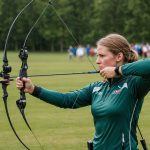Understanding Cardiovascular Endurance in Rowing
Cardiovascular endurance is a key component of rowing performance, especially for competitive rowers. It refers to the ability of the heart and lungs to supply oxygen to the muscles during prolonged physical activity. Rowing requires sustained, powerful strokes, making cardiovascular endurance crucial for maintaining optimal rowing performance throughout races.
Aerobic capacity, often used to measure endurance, greatly impacts rowing performance. This measure reflects how efficiently the body uses oxygen while engaging in sustained activity. Rowers with higher aerobic capacity can maintain higher intensities for more extended periods without fatigue. This advantage can be the deciding factor in competitive scenarios where endurance distinguishes winners from the rest.
In parallel : Elevate your open water skills: expert training techniques for elite swimmers
Traditional training methods for enhancing cardiovascular endurance in rowing include long-distance rowing sessions to build stamina and interval training to improve aerobic capacity. These methods ensure that rowers develop both the heart and muscle strength necessary for sustained performance. Incorporating diverse techniques—such as on-water rowing, ergometer sessions, and endurance-based land exercises—ensures comprehensive development of cardiovascular endurance. By increasing exposure to varied endurance activities, rowers can optimize their performance and achieve their fitness goals effectively.
Innovative Cross-Training Techniques
Incorporating various cross-training methods into an athlete’s routine can enhance performance and prevent burnout. Below are some strategies tailored to rowers looking to expand their endurance and overall fitness.
Also read : Achieve pain-free running: essential exercises to avoid iliotibial band syndrome
High-Intensity Interval Training (HIIT)
High-Intensity Interval Training (HIIT) consists of short, intense bursts of exercise followed by rest periods. This method focuses on maximising effort and intensity to boost cardiovascular endurance. By incorporating HIIT workouts, rowers can improve their aerobic capacity and muscular endurance, enhancing overall rowing performance. A typical HIIT session for rowers might include 30 seconds of intense rowing followed by 1 minute of rest, repeated for 15-20 minutes.
Cycling for Rowers
Cycling serves as an excellent alternative workout for rowers due to its low-impact nature and cardiovascular benefits. It allows athletes to maintain and build endurance without putting additional strain on their joints. To structure an effective cycling session, rowers should aim for 30-60 minute rides at a moderate intensity, focusing on maintaining a consistent pace. Integrating cycling into a rowing routine requires balance, ensuring adequate recovery time between workouts.
Swimming as a Cross-Training Option
Swimming provides a unique endurance training opportunity due to its full-body engagement and low-impact environment. It effectively conditions the heart and lungs while reducing the risk of injuries. Rowers can benefit from swimming workouts such as interval laps or continuous moderate-intensity swims. When integrating swimming, safety considerations like proper technique and gradual intensity increase should always be prioritised.
Comparing Cross-Training Techniques with Traditional Methods
When discussing training comparison between cross-training and traditional rowing methods, it’s important to highlight the differences in approach and outcomes. Traditional rowing methods focus on perfecting stroke technique and increasing on-water endurance. In contrast, cross-training incorporates diverse activities like cycling, swimming, or weightlifting to enhance overall fitness and prevent injury.
Studies suggest that cross-training benefits athletes by improving cardiovascular and muscular endurance, which traditional rowing may not fully address. This diverse exercise regime can prevent overuse injuries common with repetitive rowing strokes. The scientific evidence supporting cross-training emphasizes that varied workouts can lead to improved performance and quicker recovery times.
However, relying solely on traditional rowing methods may have potential drawbacks. These include the risk of muscle imbalances and increased likelihood of burnout due to the repetitive nature of rowing. Although traditional training is crucial for mastering specific skills, it might not foster the comprehensive fitness required for long-term athletic prowess.
In conclusion, incorporating cross-training with traditional methods can offer a balanced approach. By diversifying workouts, rowers can potentially enhance performance, reduce the risk of injury, and sustain a higher level of athletic engagement throughout their careers.
Success Stories: Rowers Who Transformed Their Endurance
Exploring the experiences of competitive rowers reveals inspiring stories of training success and endurance transformation. These case studies highlight the commitment and determination needed for peak performance.
Case Study: A National Champion’s Journey
A national rowing champion once faced a plateau in performance despite a rigorous training regimen. Initially focusing solely on traditional rowing techniques, the athlete realized the need for diversification. By integrating cross-training exercises, such as cycling and bodyweight strength workouts, significant improvements were observed. The new training approach not only enhanced endurance but also improved overall fitness levels. The key lessons for other athletes include the importance of versatility in one’s regimen and the necessity of challenging the body’s limits beyond its comfort zone. This champion advises maintaining a balance between rowing-specific exercises and holistic cross-training routines.
Testimonials from the Rowing Community
Many rowers within the community have shared real-life experiences about adopting innovative cross-training methods. By collaborating and exchanging strategies, they’ve observed improvements in competitive performance and overall fitness. Support from fellow rowers and the shared commitment to enhancement have played crucial roles in their success stories. These testimonials underline the importance of a supportive community while embarking on a journey of transformation. Cross-training has proven to be a pivotal element in reaching new heights of endurance.
Tips for Implementation
Integrating cross-training into your existing workout can significantly boost your performance enhancement. To start, identify the primary goals you want to achieve, such as muscle strengthening or endurance building. This focus will shape your training routine effectively.
When incorporating cross-training, consistency is key. Begin by substituting one or two sessions a week with different workouts that complement your main activity. For instance, runners might add cycling to increase cardiovascular efficiency while reducing joint stress.
Balancing intensity and recovery is crucial. Overtraining can result in injuries or burnout. Listen to your body and adjust your workouts accordingly. Rotate between high-intensity and low-impact exercises, ensuring ample rest days. This method not only prevents fatigue but also aids in achieving superior results over time.
Set clear goals and track progress. This can be as simple as logging workouts in a journal or using digital apps to monitor improvements. Real-time tracking allows you to adjust your strategy, ensuring alignment with your performance targets.
Remember, the right training tips and structured routines are vital in realizing your workout integration goals effectively. Stay patient and consistent for the best outcomes.
Visual Aids and Resources
When it comes to improving your rowing skills, having access to diverse resources can make a world of difference. Let’s explore the available workout plans, training videos, and other educational materials that can help enhance your performance.
Sample Workout Plans
Comprehensive cross-training schedules tailored for rowers are invaluable. These plans not only focus on rowing but also integrate exercises that target the entire body. By including workouts for strength, flexibility, and cardiovascular endurance, these schedules ensure that every muscle group is catered to. To accommodate varying abilities, suggested adaptations for different skill levels are provided, enabling each individual to progress safely. Additionally, printable resources are available to offer you easy reference, ensuring you can follow your chosen workout plan wherever you are.
Video Demonstrations of Techniques
Training videos serve as an effective tool for visual learners. Instructional resources emphasize the importance of maintaining proper form and technique during cross-training. Utilizing training videos allows you to visualize movements step-by-step, facilitating improved understanding. Moreover, exploring additional resources can enrich your learning journey, encompassing everything from breathing techniques to advanced workouts. Engaging with these materials ensures you are not only exercising effectively but also safely, minimizing risks of injury.











